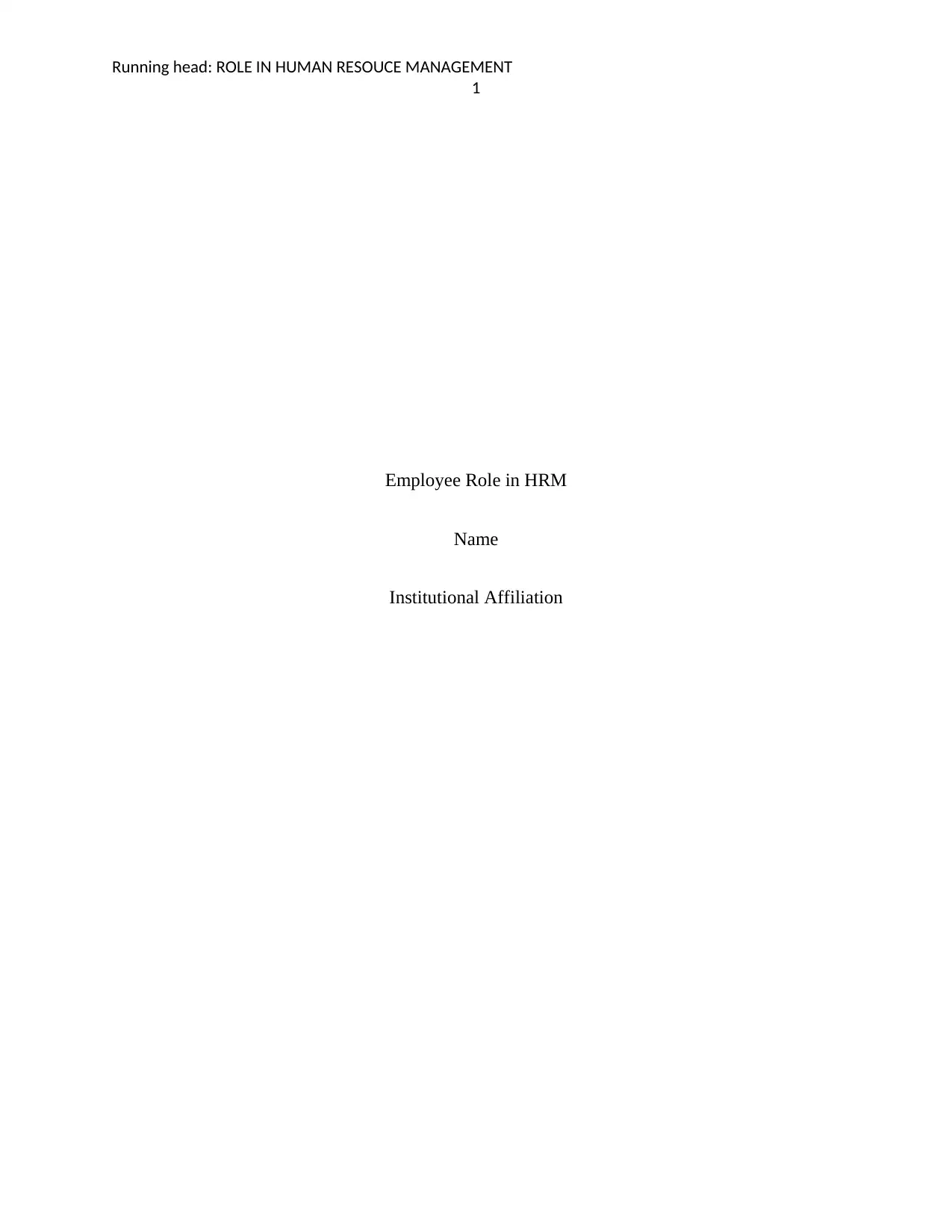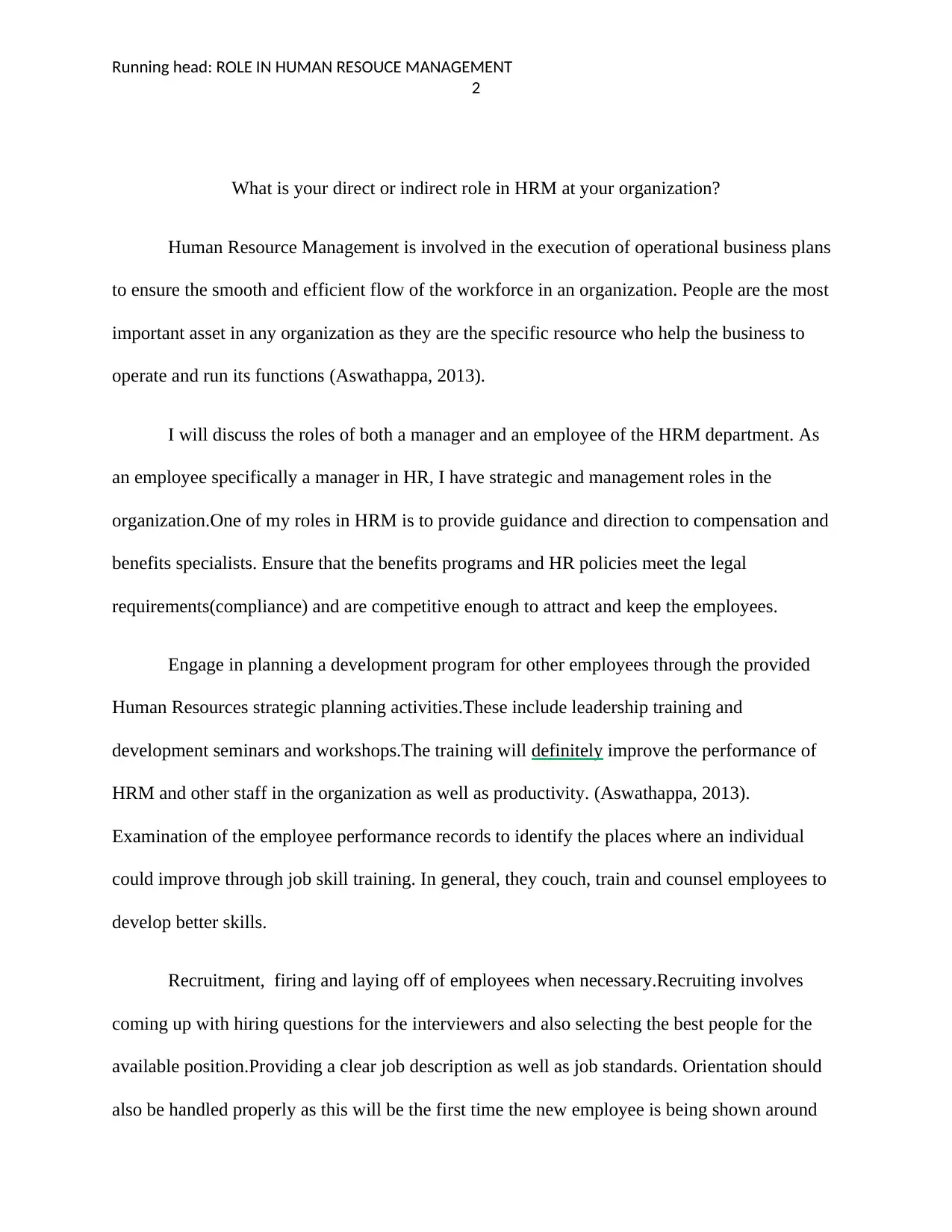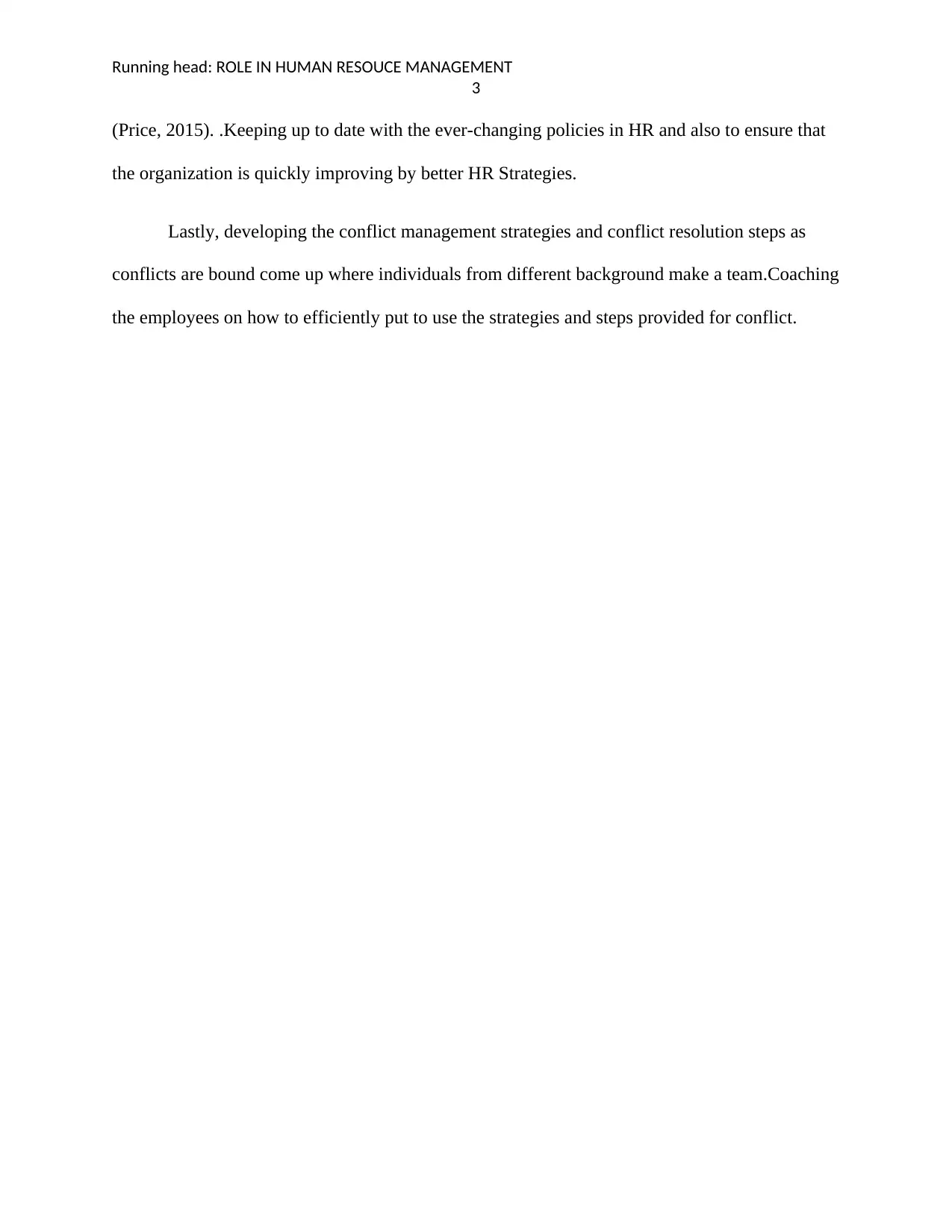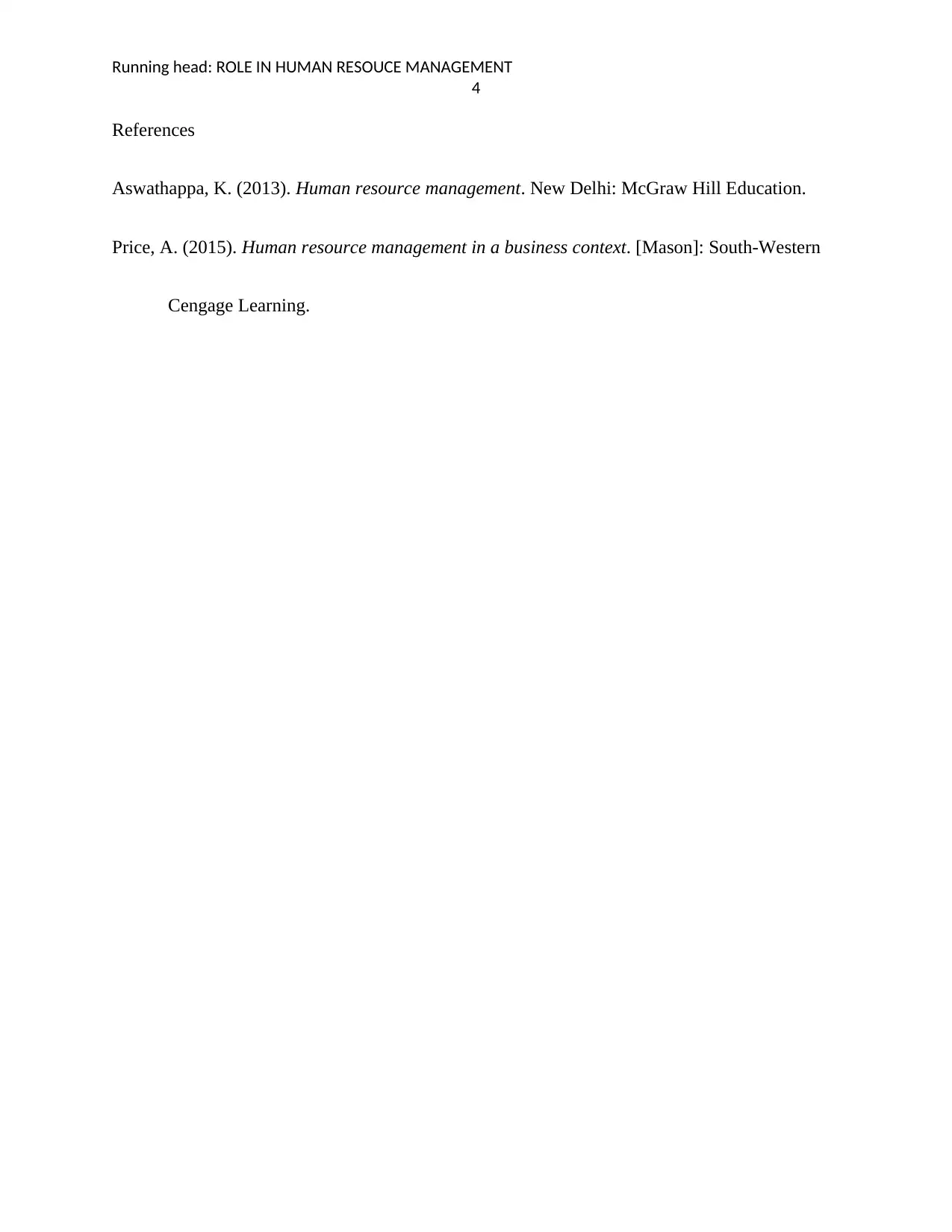Employee Role in HRM: Strategic HRM and Performance Analysis Report
VerifiedAdded on 2020/04/21
|4
|424
|202
Report
AI Summary
This report delves into the multifaceted role of an employee within the realm of Human Resource Management (HRM). It examines the strategic and managerial responsibilities, particularly focusing on the functions of an HR manager. The report outlines key responsibilities, including providing guidance on compensation and benefits, ensuring legal compliance, and developing employee training programs. Furthermore, it highlights the importance of performance evaluations, recruitment processes, and the establishment of clear job descriptions. The report also addresses the significance of staying updated with HR policies, developing conflict management strategies, and coaching employees. The report is based on research from Aswathappa (2013) and Price (2015), offering insights into practical HRM strategies and their impact on organizational effectiveness.
1 out of 4










![[object Object]](/_next/static/media/star-bottom.7253800d.svg)